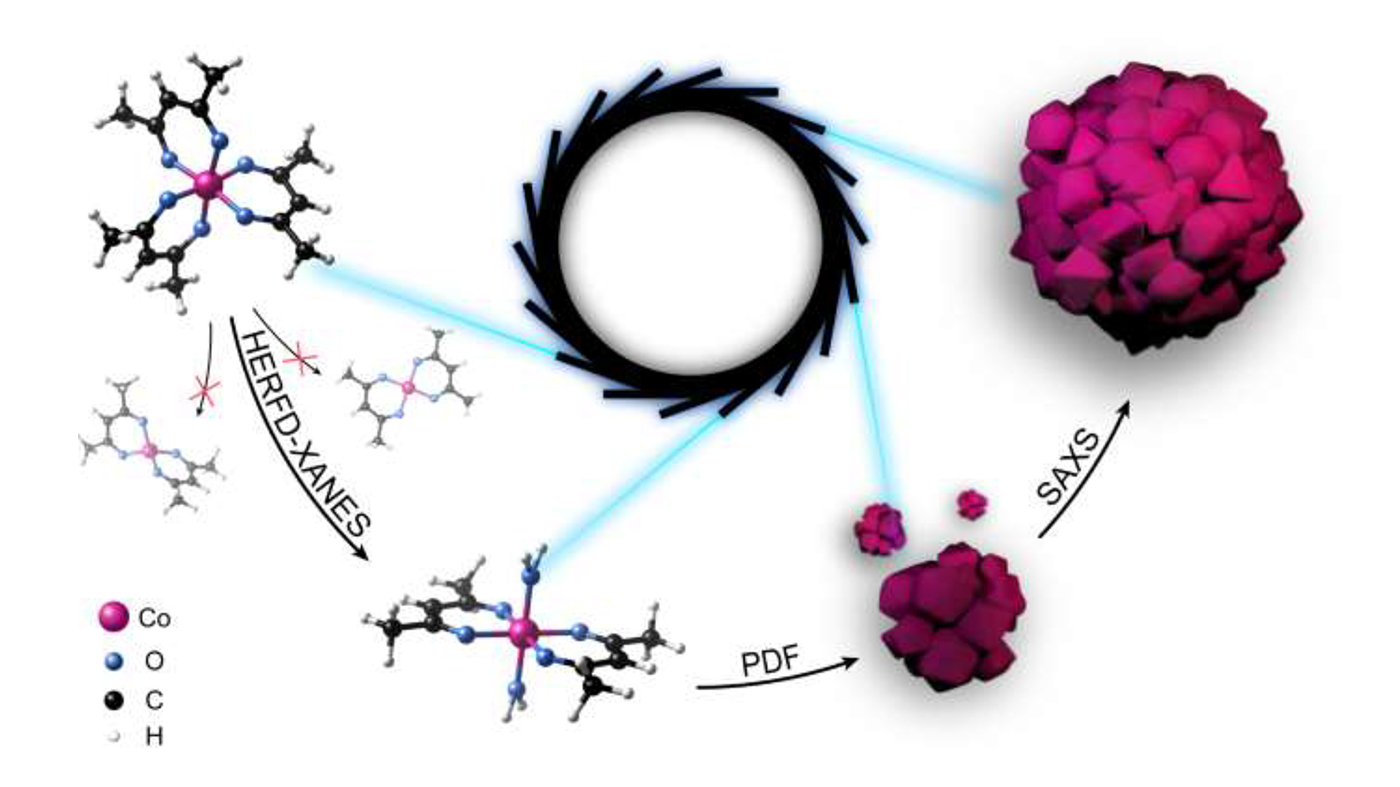Reactor cell
This reactor cell has been used to follow the complex mechanisms of cobalt oxides as well as Co nanoparticles synthetisation in an organic solvent, and study the evolution of CoO nano-assemblies in solution.

Description
This reactor cell can be used at several synchrotron and neutron facilities, including the Swedish Materials Science beamline's P21.1 branch and is described in M. Staniuk et al. (2014) Chem. Mater., Vol.26, No.6, p.2086-2094.
doi.org/10.1021/cm500090r
Synethisation of cobalt oxides and cobalt nano particules
Staniuk et al. followed the complex mechanisms of cobalt oxides (Co3O4 and CoO) as well as Co nanoparticles synthetisation in an organic solvent. XRD and X-Ray Absorption Spectroscopy (XAS), performed in-situ up to 180 °C during the synthetization of Co oxide and Co nanopowders enabled the identification of the occurrence of four chemical reactions within the solvent, and the complex interdependence of these four chemical reactions was revealed [21]. Experiments were performed at the Swiss-Norwegian Beamline (SNBL) BM01B at ESRF.
Grote et al. used this same reactor cell in order to provide a comprehensive study on the evolution of CoO nano-assemblies in solution [22]. They used a wide range of X-ray measurements - XAS, PDF, SAXS, and laboratory XRD - in order to characterize the nanoparticles’ mean size, their superstructure, and the molecular assemblies of the Co acetylacetonate. This multiscale characterisation enabled a better understanding of the complex evolution of those nanoparticles, and thereby improved control of the synthetisation process.
Experiments were performed at the Swedish Materials Science beamline, P21.1 branch (for total scattering - PDF), at the P03 beamline at Petra III (for SAXS) and at the ID26 and BM14 beamline at ESRF (for XAS).
For further information about these research cases, see:
- M. Staniuk, O. Hirsch, N. Kränzlin, R. Böhlen, W. van Beek, P.M. Abdala, D. Koziej, Puzzling Mechanism behind a Simple Synthesis of Cobalt and Cobalt Oxide Nanoparticles: In Situ Synchrotron X-ray Absorption and Diffraction Studies, Chem. Mater. 26 (2014) 2086–2094. https://doi.org/10.1021/cm500090r.
- L. Grote, C.A. Zito, K. Frank, A.-C. Dippel, P. Reisbeck, K. Pitala, K.O. Kvashnina, S. Bauters, B. Detlefs, O. Ivashko, P. Pandit, M. Rebber, S.Y. Harouna-Mayer, B. Nickel, D. Koziej, X-ray studies bridge the molecular and macro length scales during the emergence of CoO assemblies, Nat Commun. 12 (2021) 4429. https://doi.org/10.1038/s41467-021-24557-z.



